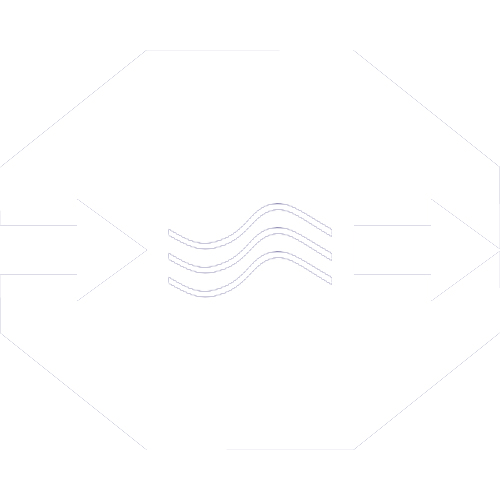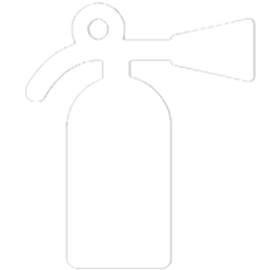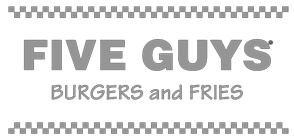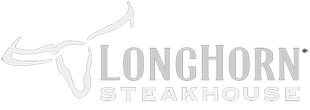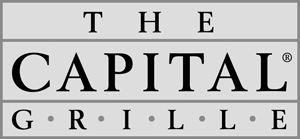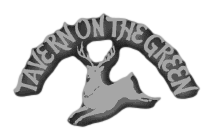NFPA 211: Done Right’s CEO Jacob Chechkov reveals the truth about Fire safety
When most people hear “chimney” and “venting,” they think of old-fashioned fireplaces in homes. However, NFPA 211—the Standard for Chimneys, Fireplaces, Vents, and Solid Fuel–Burning Appliances—has important ramifications for commercial venting systems too. In Florida’s vibrant restaurant scene, many establishments rely on commercial ductwork and exhaust hoods to remove smoke, heat, and cooking byproducts from kitchens. Even though these systems aren’t the traditional brick-and-mortar chimneys, they fall under venting guidelines that help keep restaurants safe from fire hazards, carbon monoxide buildup, and air-quality problems.
This guide will explain why NFPA 211 matters for Florida restaurants, focusing on commercial ducts and exhaust hoods. We’ll discuss how regular inspections, cleaning, and maintenance aren’t just formalities but critical components of a healthy, code-compliant establishment. Let’s explore:
By understanding how NFPA 211 dovetails with the broader codes adopted by Florida—including NFPA 96 for commercial kitchens—you can ensure your restaurant’s ventilation system remains safe, efficient, and compliant.
NFPA 211 in a Nutshell
1.1 Overview of NFPA 211
NFPA 211 is the Standard for Chimneys, Fireplaces, Vents, and Solid Fuel–Burning Appliances, published by the National Fire Protection Association (NFPA). While it’s often associated with residential wood-burning stoves and brick chimneys, it also addresses general venting principles for:
- Combustion appliances (gas, oil, or solid fuel-fired).
- Exhaust systems that remove combustion byproducts.
- Inspections, maintenance, and alterations to these venting pathways.
In a Florida restaurant context, NFPA 211 establishes foundational guidelines for how venting systems—like ducts carrying exhaust from cooking appliances—should be:
- Constructed or lined.
- Connected to appliances.
- Maintained, inspected, and repaired to ensure safety.
Relevance to Commercial Kitchens
Commercial kitchens typically rely on specially designed exhaust hoods and ductwork to remove:
- Smoke
- Heat
- Grease-laden vapors
- Combustion gases (if cooking equipment is gas-fired)
Although NFPA 211 doesn’t exclusively focus on “kitchen hoods,” many of its venting concepts apply when these hoods tie into vertical or horizontal duct runs that exit the building. Proper clearances, material standards, and inspection schedules all borrow from NFPA 211’s approach to preventing fires and ensuring safe venting of byproducts.
Venting Systems in Florida Restaurants
2.1 The Anatomy of a Commercial Exhaust System
A commercial exhaust system in a Florida restaurant commonly includes:
- Exhaust Hood: Positioned over cooking equipment, capturing rising steam, smoke, and grease.
- Grease Filters: Located in the hood to trap large grease particles before they enter the ductwork.
- Exhaust Duct: Runs from the hood, often vertically or horizontally, to an external exhaust fan and vent terminal.
- Exhaust Fan: Pulls air and byproducts out of the kitchen, creating negative pressure that prevents smoke from escaping into the dining area.
2.2 How NFPA 211 Concepts Apply
NFPA 211 principles emphasize:
- Proper Clearances: Ensuring duct runs and exhaust vents maintain safe distances from combustible building materials.
- Sound Construction: Using appropriate duct materials, supports, and connectors to handle high temperatures and prevent leaks.
- Regular Inspections: Checking for obstructions, damage, or accumulated deposits that can ignite or reduce airflow.
In Florida, where humidity is high and kitchens often operate year-round, good venting practices help keep cooking areas comfortable and mitigate fire risks.
Why Regular Commercial Venting Inspections Matter
3.1 Fire Safety
Grease and flammable residues accumulating in ducts create a prime environment for flash fires, which can quickly spread to the restaurant’s roof or attic. Frequent inspections identify these problem spots before they become hazardous.
3.2 Code Compliance
Florida’s building and fire codes (which reference NFPA 211, NFPA 96, and others) require periodic inspections of restaurant venting systems. Non-compliance can lead to fines, forced closures, or increased insurance premiums.
3.3 Efficiency and Indoor Air Quality
When exhaust ducts and hoods are dirty or damaged, airflow suffers. This can lead to:
- Excess heat and humidity in the kitchen.
- Unpleasant odors migrating to dining areas.
- Poor carbon monoxide (CO) venting if gas appliances aren’t exhausting correctly.
Regular inspections keep systems efficient, protecting employee health and customer comfort.
Key Maintenance Tasks for Exhaust Hoods and Ducts
4.1 Grease Removal
Grease-laden vapors condense on duct walls, fans, and hoods. NFPA 211-inspired inspection schedules ensure you remove these deposits before they become a fire hazard. Best practices include:
- Monthly, Quarterly, or Semiannual cleaning intervals, depending on cooking volume.
- Using professional cleaners certified in commercial hood and duct servicing.
- Replacing or cleaning grease filters regularly to reduce duct contamination.
4.2 Physical Restaurant Hood Inspection and Repairs
Look for:
- Holes or corrosion in duct sections.
- Loose connections or supports.
- Warped metal near high-heat cooking appliances.
Structural integrity is crucial: compromised ductwork can leak hot air or grease into concealed spaces. To learn more, read our comprehensive guide: What Restaurant Owners Must Know to Pass Fire Safety Inspections
4.3 Fan and Motor Checks
The exhaust fan is the heartbeat of your venting system:
- Motor belts can wear out or slip, reducing airflow.
- Bearings and pulleys need lubrication or replacement to avoid overheating.
- Fan blades should be free of grease buildup that impedes performance.
Regular servicing keeps fans running at peak efficiency.
4.4 Access Doors and Cleanout Panels
Properly installed cleanout doors or panels in duct runs enable technicians to reach problem areas during inspections or cleanings—an important requirement in many NFPA codes (including NFPA 96). If your system lacks adequate access points, consider retrofitting them to comply with inspection guidelines and to improve safety.
Common Hazards and Code Violations
5.1 Grease Fires
One of the most common and dangerous hazards in commercial kitchens is grease ignition within ducts or hoods. Once a flame catches in these tight, grease-coated spaces, it can quickly travel upward, igniting surrounding materials or the roof structure.
5.2 Obstructed Airflow
If lint, dust, or debris builds up in ductwork—or if fans fail—smoke and heat can back up into the kitchen, risking:
- Overheating of cooking appliances.
- Higher carbon monoxide levels from gas-fired equipment.
- Poor ventilation that may lead to occupant discomfort or respiratory issues.
5.3 Improper Clearances
NFPA 211 mandates certain clearances to combustibles around venting systems. In a Florida restaurant remodel, owners might inadvertently build too close to a duct run with wood framing or flammable insulation. This is a code violation that can result in a forced redesign.
5.4 Unsealed Penetrations
Where ductwork penetrates fire-rated walls, floors, or ceilings, the gap must be sealed with approved firestopping materials. Incomplete or substandard sealing is a violation that can allow smoke or flames to spread, undermining the building’s compartmentalization strategy.
NFPA 211 vs. NFPA 96: Clarifying the Overlap
6.1 NFPA 211 Focus
- Broadly addresses chimneys, vents, and fireplaces, including maintenance and inspection intervals for solid-fuel, gas, and oil-burning appliances.
- Emphasizes construction, clearances, and inspection of venting pathways.
6.2 NFPA 96 Focus
- Specifically targets commercial cooking operations that produce grease-laden vapors.
- Details hood design, filters, duct construction, fan types, and mandatory cleaning schedules.
In a Florida restaurant, you’ll typically see NFPA 96 cited for hood and duct requirements, but NFPA 211 still underpins many of the venting and inspection principles. Together, they form a comprehensive framework for ensuring that everything from a basic oven vent to a multi-story commercial flue is safe and functional.
Florida-Specific Considerations
7.1 Coastal Environments
Salt air in coastal cities like Miami or Tampa can accelerate corrosion in metal ductwork. Regular inspections should look for rust or pitting, especially on external duct runs exposed to humidity and marine conditions.
7.2 High Humidity and Mold
Florida’s hot, humid climate can promote mold or mildew growth in poorly maintained ducts. Although NFPA 211 doesn’t explicitly address biological growth, regular cleaning and ensuring proper airflow help deter mold, improving indoor air quality.
7.3 Local Ordinances and Licensing
Many Florida counties or municipalities enforce stricter inspection or cleaning intervals than the national NFPA standards. Some require:
- Certified hood cleaning contractors for commercial kitchens.
- Proof of semiannual or annual inspections.
- Additional approvals for any vent system modifications.
Staying current with local rules—and working with professionals who know them—prevents expensive citations.
Inspection and Documentation Best Practices
8.1 Setting an Inspection Schedule
Depending on the cooking volume and appliance type, inspection frequencies vary:
- High-volume fryers or charbroilers: Monthly to quarterly.
- Moderate-volume operations: Semiannual to annual.
- Low-volume or seasonal establishments: At least annually, though more frequent checks in Florida’s heat and humidity are wise.
8.2 Hiring Qualified Inspectors
Look for licensed, certified hood cleaning and vent inspection professionals. They should be familiar with NFPA 211, NFPA 96, and any pertinent Florida amendments. A reputable contractor will provide:
- Detailed before-and-after photos of duct interiors.
- Comprehensive reports on repairs or recommendations for improving the system.
- Certificates or stickers indicating compliance dates for quick reference by the local fire marshal.
8.3 Recordkeeping
Keep a digital or physical binder of:
- Inspection Reports: Documenting findings, cleaning logs, and recommended action steps.
- Work Orders: Summaries of repairs or upgrades made to fans, ducts, or hoods.
- Receipt of Services: Proof of payment and licensing credentials for service providers.
When the AHJ or insurance inspector asks for your records, producing these materials quickly can avert skepticism and speed up approvals.
Case Study: A Florida Restaurant’s Venting Overhaul
9.1 The Problem
A popular seafood restaurant in the Florida Panhandle experienced multiple minor duct fires over six months. Though extinguished quickly, these flare-ups raised concerns about compliance and safety. An AHJ inspection revealed:
- Thick grease buildup in ductwork and on fan blades.
- Improper clearance where the duct penetrated the roof.
- No documentation of prior hood cleaning or inspection services.
9.2 The Overhaul
- Professional Inspection: A specialized contractor, versed in NFPA 211 and NFPA 96, scoped the duct runs using cameras and found severe blockages.
- Cleaning and Repairs: Technicians steam-cleaned all duct surfaces, removed caked-on grease, and replaced the exhaust fan with a more powerful, corrosion-resistant model.
- Code-Compliant Clearances: Contractors installed noncombustible spacers and sealed the roof penetration with approved fire-rated materials to meet clearance requirements.
- Documentation and Training: The restaurant now maintains monthly inspections, logging any grease buildup or issues. Staff underwent basic training to spot potential hazards (e.g., abnormal fan noise, visible smoke leaks).
9.3 The Outcome
Subsequent AHJ inspections went smoothly, with the fire marshal lauding the restaurant’s improved safety culture. Insurance premiums stabilized, and patrons enjoyed a smoke-free dining atmosphere. The case underscores how a NFPA 211-aligned approach to venting system maintenance saves time, money, and peace of mind in the long run.
Conclusion
NFPA 211 may be best known for residential chimneys, but its principles profoundly impact commercial ductwork and exhaust hoods in Florida restaurants. By integrating these guidelines—and overlapping ones from NFPA 96—restaurateurs can create a robust venting system that:
- Mitigates fire risks caused by grease buildup and improper clearances.
- Ensures consistent indoor air quality, which is essential in Florida’s hot, humid climate.
- Simplifies code compliance and inspection processes, avoiding hefty penalties or business disruptions.
Whether you run a high-volume steakhouse in Miami or a boutique café in St. Augustine, regular venting system maintenance—inspired by NFPA 211’s overarching approach to safe venting—keeps your kitchen efficient, your staff safe, and your customers returning for that great Florida hospitality.
Key Takeaways
- NFPA 211 isn’t just for chimneys—its venting concepts apply to commercial ducts and exhaust hoods.
- Regular inspections and cleaning prevent grease fires, reduce downtime, and maintain code compliance.
- Combine NFPA 211 insight with NFPA 96 guidelines for a complete picture of restaurant ventilation safety.
- Florida’s climate and local ordinances may demand more frequent checks and specialized materials.
- Documentation of maintenance and inspections provides invaluable proof of diligence if issues arise.
By embracing these best practices, you’ll ensure your Florida restaurant remains a safe, thriving, and enjoyable environment for everyone who steps through the doors.
Additional Resources
- NFPA 211: The Foundation of Safe Venting Systems
National Fire Protection Association (NFPA)
This official NFPA Journal article explores the evolving applications of NFPA 211, including its importance in non-residential settings like restaurants. It explains how venting systems can pose fire risks and why standardized construction and inspection practices matter.
Read more: https://www.nfpa.org/education-and-research/nfpa-journal/2022/november-december-2022/features/nfpa-211 - Food Safety and Sanitation Compliance Inspections in Florida
Florida Department of Agriculture and Consumer Services (FDACS)
This resource outlines food establishment inspection protocols in Florida, including guidance on ventilation and fire safety standards that reference NFPA codes. A must-read for restaurateurs operating in the Sunshine State.
Visit FDACS: https://www.fdacs.gov/Business-Services/Food-Establishments/Food-Safety-and-Sanitation-Compliance-Inspections - NFPA 96: Standard for Ventilation Control and Fire Protection of Commercial Cooking Operations
National Fire Protection Association (NFPA)
Dive into the definitive code governing commercial kitchen exhaust systems. This page provides access to NFPA 96 and related materials, including cleaning schedules, duct design requirements, and inspection mandates.
Explore NFPA 96: https://www.nfpa.org/codes-and-standards/all-codes-and-standards/list-of-codes-and-standards/detail?code=96





